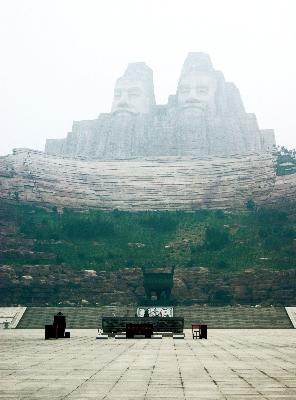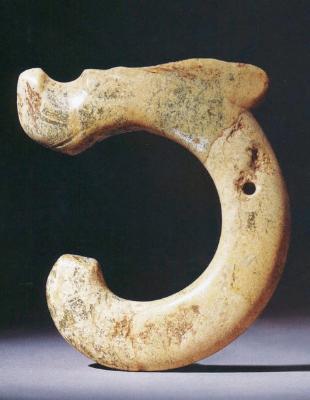- Koguryo and Balhae
- Korea-China History Awareness
Koguryo and Balhae
Table of Contents Open Contents
- History in Dispute
- The Northeast Project: Intent and Contrivance
- China’s Claims and Korea’s Perspective
- The Northeast Project: Impact and Response
- Details of the Northeast Project and its Research Results
- Northeast Project Reference List
Gojoseon Roots
- ▶ Gojoseon spanned Gija Joseon→Wiman Joseon→Four Commanderies of Han and is part of Chinese history.
- ▶ Gojoseon was a kingdom founded by Dangun that arrived at its Bronze Age independently.
However, Gija Joseon cannot be recognized as such based on archaeological evidence or historical records. China’s claims are based on Sangseodaejeon, a compilation of records from the Han dynasty. The fact that records related to Gija (Jizi), that were previously nonexistent in Chinese history, seemingly appear suddenly is due to contemporary needs.
If people migrated en masse and established a country, they would certainly leave physical traces. However, the bronze culture from the Liaodong Peninsula and Korean Peninsula is fundamentally unique from China and continued to be handed down with gaps in history. Conversely, examples of bronze culture from the Yin and Zhou dynasties are not found in these regions.
The Liaoning Bronze Dagger, Misongri Earthenware, and dolmens are evidence of an independent culture that was facilitated by Dangun (founder of Gojoseon). Wiman from the state of Yan usurped the throne and founded Wiman Joseon. But in this case, the fundamental identity of the country remained the same, and only a part of the Gojoseon ruling class was replaced. The name Joseon continued to be used, and Joseon figures such as the JoseonSang Rhoin Encyclopedia of Korean Culture , Yeokgaeyeong Encyclopedia of Korean Culture , and Nigesang Cham were placed in senior positions in large numbers during the King Ugeo Encyclopedia of Korean Culture period. In other words, Wiman Joseon is included in Gojoseon. This is also the reason why Il-yeon (Buddhist monk from the Goryeo Dynasty) referred to Wiman Joseon as Gojoseon in Samguk Yusa (Memorabilia of the Three Kingdoms) in relation to Dangun's Joseon. Needless to say, the founding of Joseon by Yi Seong-gye (Taejo of Joseon) was a natural succession of Gojoseon.
Xia–Shang–Zhou Chronology Project
The Xia-Shang-Zhou Chronology Project was an attempt by the People's Republic of China to determine the absolute location and time frame of the Xia, Shang, and Zhou dynasties from the establishment of the Xia dynasty to the first year of the Western Zhou period (841 BCE). By determining the time frames for Xia (2070 - 1600 BCE), Shang (1600 - 1300 BCE), late Shang (1300 - 1046 BCE), and Western Zhou (1046 - 771 BCE) dynasties and subsequently publicizing the results of the Xia-Shang-Zhou Chronology Project in 2000, China boasted that it established a civilization far earlier than any surrounding country. Although China was able to inspire national pride and confidence and enhance national cohesion, it was widely criticized domestically and internationally for the subjective and imprecise approach to the research.
Chronology for the Xia–Shang–Zhou Project
| Dynasty | King | Reign (BCE) |
| Xia | 2070 - 1600 | |
| Shang | Early | 1600 - 1300 |
| Shang | Pan Geng | 1300 - ? |
| Xiao Xin | ||
| Xiao Yi | ? - 1251 | |
| Wu Ding | 1250 - 1192 | |
| Zu Geng | 119 - ? | |
| Zu Jia | ||
| Lin Xin | ||
| Geng Ding | ? - 1148 | |
| Wu Yi | 1147 - 1113 | |
| Wen Ding | 1112 - 1102 | |
| Di Yi | 1101 - 1076 | |
| Zhou Xin | 1075 - 1046 | |
| Western Zhou | King Wu | 1046 - 1043 |
| King Cheng | 1042 - 1021 | |
| King Kang | 1020 - 996 | |
| King Zhao | 995 - 977 | |
| King Mu | 976 - 923 | |
| King Gong | 922 - 900 | |
| King Yi | 899 - 892 | |
| King Xiao | 891 - 886 | |
| King Yi | 885 - 878 | |
| King Li | 877 - 841 | |
| Gonghe Regency | 841 - 828 | |
| King Xuan | 827 - 782 | |
| King You | 781 - 771 |
Origin of Chinese Civilization Project

▶ Stone Figures of Yandi and Huangdi in Yellow River Scenic Area National Park in Zhengzhou, Henan Province

Liao River Civilization Theory
The Liao River Civilization Theory is a doctrine based on the development of ancient civilizations and culture in the Liao region. Its representative Hongshan culture was a relatively developed Neolithic culture consisting of large-scale stone tombs and temple structures known as Goddess Temples. Based on these elements, Chinese academia considers this culture to be evidence of a developed civilization with authority and hierarchical social structure. In addition, China claims that the prototypical Chinese civilization was born from Hongshan's exchanges with the Yangshao culture from the Yellow River basin and credits the civilization as a creation of the Huangdi (Yellow Emperor) tribe. Much controversy surrounds China's unreasonable application of the term “civilization” and its attempts to establish the emergence of China's first civilization in the Liao River basin via the Hongshan culture rather than the Yellow River.
Wiman
Wiman was a general who was exiled to the western fringes of Gojoseon during China’s early Han dynasty and eventually usurped the throne to found Wiman Joseon.
닫기
Four Commanderies of Han
Four commanderies from China's Han dynasty comprised of Lelang, Zhenfan, Lintun, and Xuantuestablished in Gojoseon between 108 - 107 BCE.
닫기
Five Emperors
The Five Emperors were mythological rulers and deities from ancient China that include Huangdi (Yellow Emperor)
Doopedia
, Zhuanxu
Doopedia
, Dì Kù
Wikipedia
, Yao
Wikipedia
, and Shun
Doopedia
. Other versions of the Five Emperors include Shaohao
Wikipedia
, Zhuanxu, Dì Kù, Yao, and Shun. The Five Emperors are mythological rules that precede the Xia dynasty, considered to be China's first established dynasty, and are credited with being pioneers of civilization and inventors of wheel carts and various other creations. However, the folklore is unmistakably mythical in nature.
닫기
















